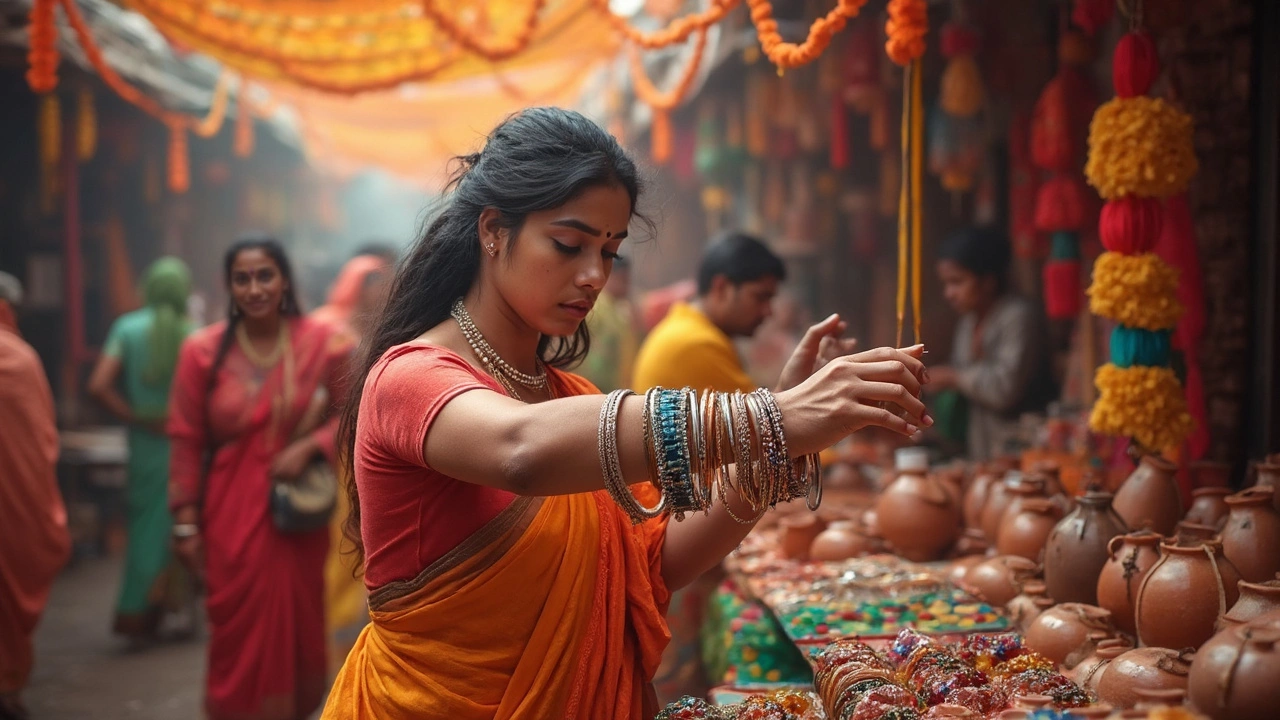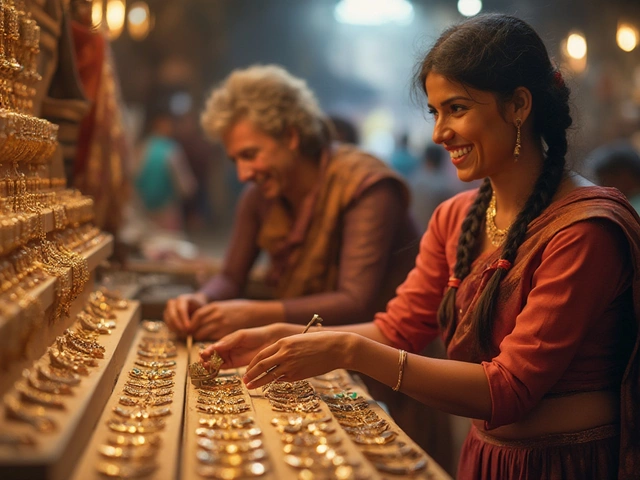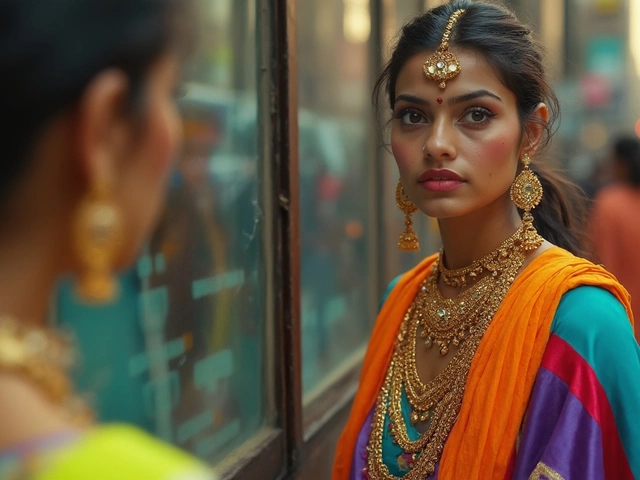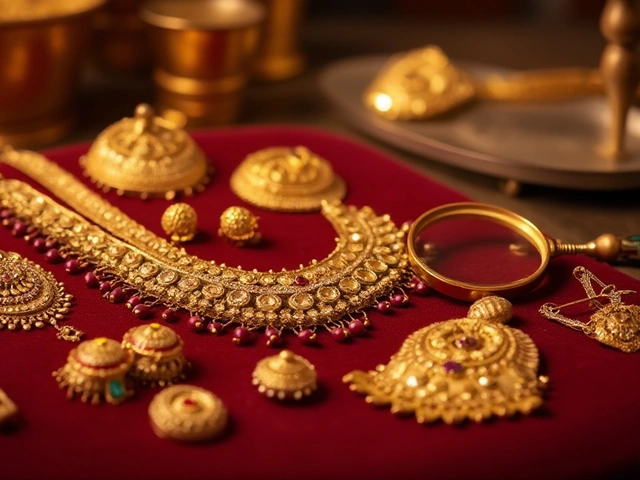Ever wondered which hand is the 'right' one for wearing traditional Indian bangles? You're not alone. In many parts of India, there are cultural beliefs, traditions, and even personal preferences that guide this fascinating choice.
Traditionally, married women in India wear bangles on both wrists. However, the choice of which hand takes precedence can vary. For instance, in some communities, the left hand is preferred because the right hand is used for eating, making the left hand a more practical choice for displaying intricate bangles.
Moreover, bangles are more than just ornamental pieces. They hold profound cultural significance. For example, they can symbolize important aspects of life like wealth and marital status, blending beauty with meaning. So picking the right hand isn't just about aesthetics—it's about tradition and personal expression too.
- Cultural Significance of Bangles
- Traditional Practices for Wearing Bangles
- Personal Style and Comfort
- Tips for Choosing the Right Hand
- Interesting Facts about Bangles
Cultural Significance of Bangles
In India, bangles hold a special place beyond just looking pretty on your wrists. They are deeply intertwined with the social and cultural fabric of the country. Traditionally, bangles are thought to bring good luck, and they often symbolize health, wealth, and prosperity.
Throughout the different regions of India, traditional bangles serve as more than just ornaments. They are part of the identity and heritage of many communities. For instance, red and green glass bangles are commonly worn by married women as a symbol of matrimony. It’s believed that the sound of these bangles wards off negative energy and brings prosperity to the family.
The Symbolism of Colors
The colors of bangles can hold various meanings. Red signifies energy and prosperity, green represents good luck and fertility, while yellow is associated with happiness.
- In northern India, brides often wear glass bangles, known as 'choora', in red and white for auspiciousness.
- In southern parts, gold bangles are prized for their everlasting value and religious significance.
- In regions like Bengal, white and red bangles are part of a specific ritual called ‘Shakha Paula’. These are made of shell and coral, respectively.
Regional Variations
India’s diversity means each region might have its own unique spin on bangles. In Maharashtra, for instance, you'll find the distinct green glass bangles symbolizing fertility among women. In contrast, Rajasthani women traditionally favor thick ivory bangles.
Bangles in Modern India
Despite being one of the oldest forms of jewelry in India, traditional bangles continue to evolve. Today, many women blend traditional styles with modern designs, creating a fusion that caters to both cultural heritage and personal style.
Bangles, therefore, are not just about accessorizing. They have a story to tell and cultural roots that offer a glimpse into India’s rich traditions. As they jingle softly with every movement, they remind wearers of their history and their place in the cultural tapestry of India.
Traditional Practices for Wearing Bangles
In India, the practice of wearing bangles is not just a fashion statement; it's deeply rooted in cultural traditions and customs. Depending on the region, these practices can have unique meanings and significance.
For instance, married women often wear glass bangles, and these are typically worn on both hands. It's a sign of good fortune and prosperity. Breaking a glass bangle is considered inauspicious, reminding us to handle these delicate accessories with care.
Regional Variations
Different regions in India have their own customs regarding traditional bangles. In some parts of South India, gold bangles hold more significance and are worn during weddings and festivals. Meanwhile, in Gujarat and Rajasthan, women often wear the famous ivory or lac bangles in vibrant colors, especially during festivals and weddings.
Bengali women have their own unique tradition of wearing 'Shakha' (white conch shell) and 'Pola' (red coral) bangles, signifying marital status and well-being of their husbands.
Symbolism Beyond Fashion
Bangles aren't only about style; they tell stories and hold meanings. In Punjabi weddings, there's a custom called 'Choora,' where a newlywed bride wears a set of red and white bangles provided by her maternal uncle. These are worn for months post-marriage to signify happiness and prosperity.
Moreover, in some cultural practices, specific colors of bangles are believed to bring health benefits. For example, green bangles might be chosen for fertility and harmony, reflecting their importance beyond just looking good.
It's truly fascinating how such a simple piece of jewelry as a bangle can carry so much weight in terms of culture and tradition! Whether it's the type of material, the hand it's worn on, or the color, every detail has a story to tell.

Personal Style and Comfort
When it comes to wearing bangles, comfort is a big deal, right? Nobody wants a nagging itch or a bangle slipping off every few steps. Your choice of hand could make all the difference.
Prioritize Comfort
If you're often using your left hand for everyday tasks, like writing or cooking, consider wearing your bangles on your non-dominant hand. It's really just about avoiding irritation, especially if you're rocking a stack of heavy metal or chunky glass bangles.
Style Statement
Bangles aren't just cultural; they're a bold fashion statement too. They add flair to any outfit, so play them up on the hand you like to gesture with. It helps catch everyone's eye at parties or get-togethers.
Customizing Your Look
Want to mix it up? Try wearing different sets of traditional bangles that reflect your mood or the occasion. Think gold for festivals or vibrant colors for casual outings.
Consider Practicality
- If you're working on a computer or driving regularly, keep bangles light and sleek on your working hand to avoid clinking noises.
- For those involved in hands-on work, pick softer materials like fabric or silicone bangles to avoid damage.
Balance Style and Function
Remember, at the end of the day, the key is balancing style and function. If you love the look but find them a hassle during certain activities, it's okay to switch hands or even opt for a special occasion-only set of bangles.
Tips for Choosing the Right Hand
When it comes to picking the 'right' hand for wearing traditional Indian bangles, it can be a blend of tradition, practicality, and personal style. Here are some handy tips to help you decide:
Consider Cultural and Religious Beliefs
Understanding the cultural or religious background associated with traditional bangles is crucial. For example, some women from Hindu communities wear bangles specifically on the left hand after marriage as a sign of being married. It's always good to know these nuances to respect traditions.
Think About Daily Activities
Your dominant hand does a lot of daily chores. Wearing bangles on the non-dominant hand can prevent them from clanging or getting scratched. If you use your right hand for most of your daily tasks, consider wearing bangles on the left and vice versa.
Match With Your Outfit
Picking the right hand might sometimes depend on your outfit. If one hand is holding a clutch or another accessory, the other hand's the perfect spot for featuring your lovely bangles. It's all about balance.
Feel Comfortable and Confident
Most importantly, wear your traditional bangles in a way that makes you feel beautiful and comfortable. Comfort shouldn’t be overlooked because the pressure should add charm, not discomfort.
Choosing the right hand can sometimes be as simple as personal comfort. With these tips, hopefully, you'll make a choice that's right for you and looks stunning as well.
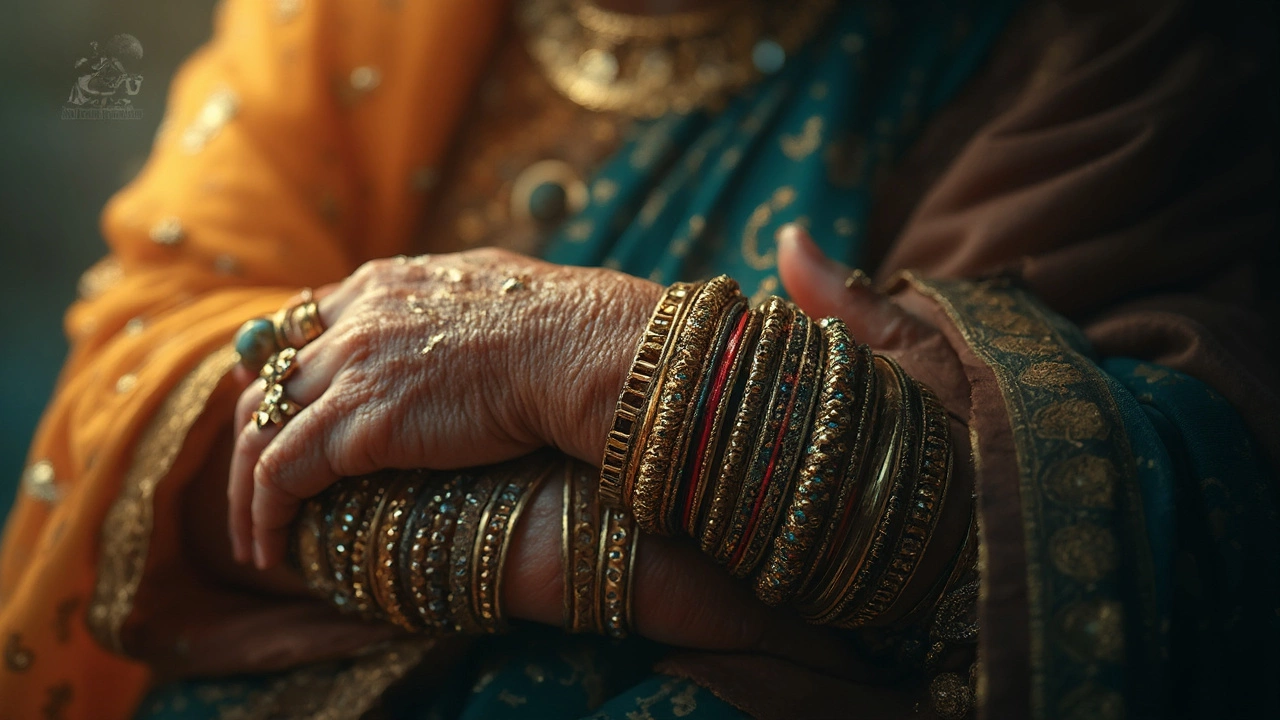
Interesting Facts about Bangles
Bangles aren't just about style—they carry a boatload of history and symbolism. Here are some fascinating tidbits that you might not know about these traditional accessories.
Ancient Roots
Bangles have been around for thousands of years. They've been found in archaeological sites dating back to 2600 BC in India's Mohenjo-Daro. It's mind-boggling to think that such a simple jewelry piece has endured through the ages.
More than Just a Fashion Statement
In Indian culture, bangles are more than merely decorative items. They're associated with prosperity and marital status. It's believed that the sound of bangles jingling around a bride's wrist wards off negative energy and brings good fortune.
Variety in Materials
Bangles can be crafted from various materials, including glass, gold, silver, and even wood. Each material might carry different meanings or suit different occasions. Glass bangles, for example, are often worn by married women as a sign of their marital status.
Color Significance
Colors play a significant role too. Red bangles symbolize energy and prosperity; green stands for luck and fertility. It's amazing how every color can add a new layer of meaning to these simple bands.
Numbers Speak Too
Believe it or not, the number of bangles worn can also hold meaning. An odd number of bangles might be chosen for good luck, while even numbers are sometimes avoided.
So next time you see someone wearing these beautiful bands, remember, there’s more to them than meets the eye. Understanding these little facts just adds to the appreciation of their cultural and historical significance.
